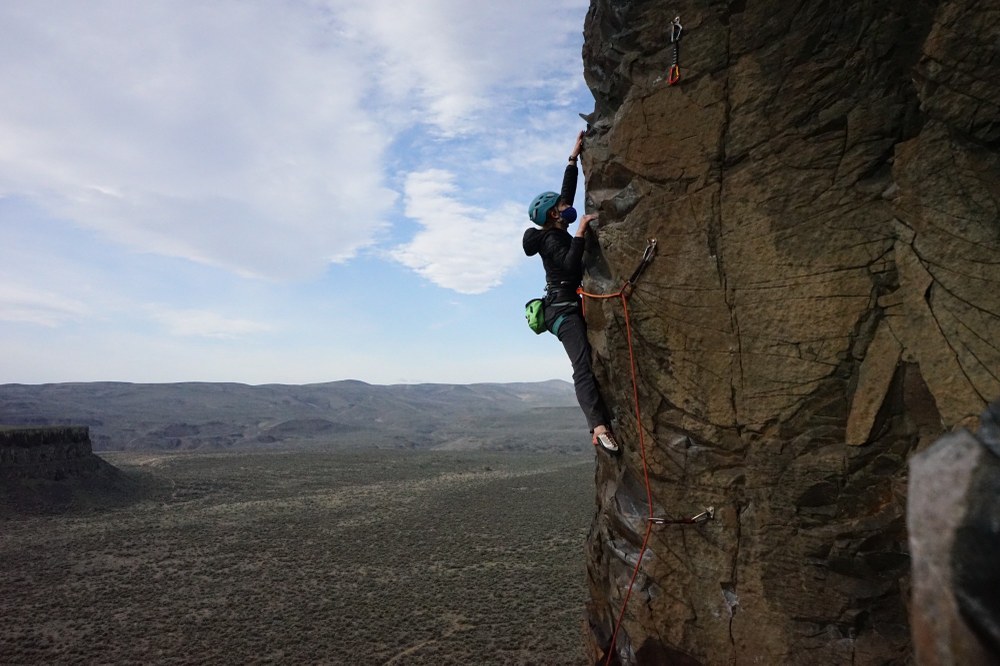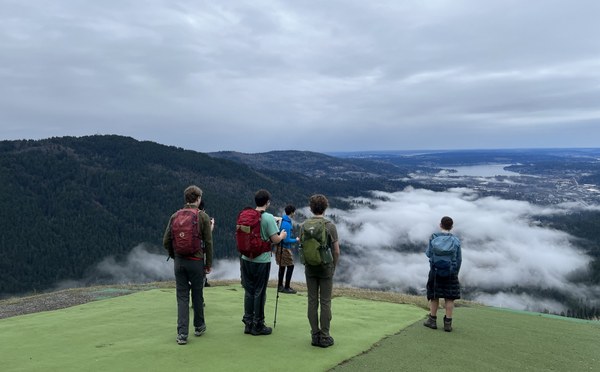
Public lands and waters - the places we hike, climb, paddle, and find connection and belonging outdoors - are critical to The Mountaineers experience. Without them, the transformational opportunities and experiences our community provides would cease to exist. In our Conservation 101 blog, What Are Public Lands?, we celebrate the various types of federal public lands, but state-managed lands also play an important role in the outdoor recreation experience.
Here in Washington, we’re fortunate to have 6.5 million acres of state-managed parks and public lands. Whether it’s climbing at Frenchman’s Coulee near Vantage, paddling Deception Pass, or hiking through the Snoqualmie River Valley, our state public lands support Mountaineers courses, trips, and activities and other outdoor experiences. Our community cares deeply for state lands and our branches frequently partner with land managers and outside stewardship organizations to conserve, enhance, and improve these places.
A little bit of knowledge about the lands you visit will help you adventure with purpose, so future generations can share in these experiences. Before you pack your Discover Pass and head out on Washington’s state public lands, learn more about the different types of places you'll visit, how they’re managed, and their varying recreational uses.
Types of Washington State Public Lands
Washington state-managed public lands are found in every corner of the state across a diverse range of habitats and ecosystems - from temperate rainforests of the Pacific Coast and Cascade range to the shrub-steppe of Eastern Washington. Washington’s state parks, wildlife areas, and natural resource conservation areas are popular for camping and generally host a wide range of activities, including fishing, hunting, biking, climbing, and wildlife watching, and more.
These places are also the ancestral lands of the Pacific Northwest Indian tribes, who have lived and stewarded these lands and waters since time immemorial. It’s important to honor Native lands and peoples by recreating mindfully and respectfully on their traditional homelands and our shared home today.
Washington State Parks
Washington State Parks (State Parks) manages more than 140 state parks, historic sites, trails, marine parks, and other properties that help connect residents and visitors alike to the state’s diverse natural and cultural heritage. These popular destinations provide memorable recreational and educational experiences through a broad array of motorized and human-powered outdoor activities. State parks typically host more developed recreational amenities like campgrounds and swimming areas compared to other state-managed public lands, making them great places for outdoor enthusiasts of all ages to hike, bike, swim, camp, and ride snowmobiles or other off-road recreational vehicles.
The Mountaineers played an instrumental role in the creation of Washington’s state park system. In 1921, longtime Mountaineers Vice President Edward Allen helped persuade the newly-formed Washington State Park Board to accept a donation of land from early Mountaineers member and former Seattle Mayor Robert Moran on Orcas Island for what is known today as Moran State Park. Washington’s first major state park led to the development of the state park system as we know it today.
The variety of possible Mountaineers activities on Washington State Parks-managed land is impressive. Depending on the season, a recreationist could rappel down a waterfall in Wallace River Canyon, cross-country ski through Lake Easton State Park, or sea kayak through Deception Pass. Thanks to our recreation permit with WA State Parks, Mountaineers leaders can provide students the skills they need to access all the recreation opportunities that our state parks have to offer.
Department of Natural Resources Areas
The Washington Department of Natural Resources (DNR) manages state forests and other trust land under a multiple use approach, balancing conservation, recreation, and timber production similar to the U.S. Forest Service. DNR areas host an array of recreational uses, including hiking, biking, climbing, and motorized vehicle use.
DNR’s Trust Land Transfer (TLT) program is the agency’s mechanism to conserve state trust lands for conservation, recreation, and other community uses. TLT helps DNR conserve lands with high ecological value and public benefits in places like Blakely Island, the Middle Fork Snoqualmie River, and along the Cascade River in the North Cascades.
The Mountaineers secures permits for our courses - ranging from Introduction to Trail Running to Wilderness Navigation - that take place on DNR-managed lands. From learning the basics of navigating with a map and compass in Raging River State Forest, to building up fitness for volcano climbing season by summiting Mt. Si, DNR-managed lands are a key outdoor teaching space for our programs.
 Mountaineers enjoy the view at Poo Poo Point on Tiger Mountain State Forest, an iconic trail in the “Issaquah Alps.” Thanks to the Washington State Department of Natural Resources, areas like these are managed and conserved for outdoor recreation.
Mountaineers enjoy the view at Poo Poo Point on Tiger Mountain State Forest, an iconic trail in the “Issaquah Alps.” Thanks to the Washington State Department of Natural Resources, areas like these are managed and conserved for outdoor recreation.
Washington Department of Fish and Wildlife Areas
Washington Department of Fish and Wildlife (DFW) manages more than 1 million acres of public lands and over 500 water access areas throughout the state. DFW’s wildlife and conservation areas are places where fish and wildlife thrive in healthy habitats and outdoor enthusiasts can experience and enjoy the state's natural resources. Recreation opportunities on DFW lands emphasize wildlife-dependent activities like hunting, fishing and shell fishing, and wildlife watching. Some state wildlife and conservation areas are more restrictive to recreation.
The Mountaineers frequently utilize state wildlife areas for our programs and activities. Most notably, many of our climbing courses take students to Frenchman Coulee at Columbia Basin Wildlife Area in central Washington. Home to some of the premier sport and trad climbing routes in the state, DFW’s management of the area has allowed our courses to teach basic and advanced climbing skills for several generations.
Conserving State Lands and Waters
The Mountaineers engages strategically on issues affecting lands managed by State Parks, Department of Natural Resources, and the Department of Fish and Wildlife. Each year, our members advocate for priority bills and funding requests in Olympia that improve conservation and recreation, and your connection to the outdoors translates into compelling advocacy with lawmakers and land managers.
The restoration, maintenance, and operations of state public lands are funded through revenue generated from the Discover Pass, tax revenue, and other land manager funding allocated in the state capital and operating budgets. Other fees, permits, and special funding mechanisms like novel license plates also support these areas.
We regularly share opportunities to advocate for state lands around each state legislative session. Sign up for our Conservation Currents newsletter to be notified of opportunities to speak up for the state public lands you love. Together we can shape a better future for Washington’s parks and public lands.
You’ll need a Washington state lands access pass or “Discover Pass” to visit State Parks, DNR, or DFW lands. You can buy a day pass from payment kiosks in several popular state parks and recreation areas, order online, or pick one up in the Mountaineers Seattle Program Center bookstore.
 The Mountaineers
The Mountaineers